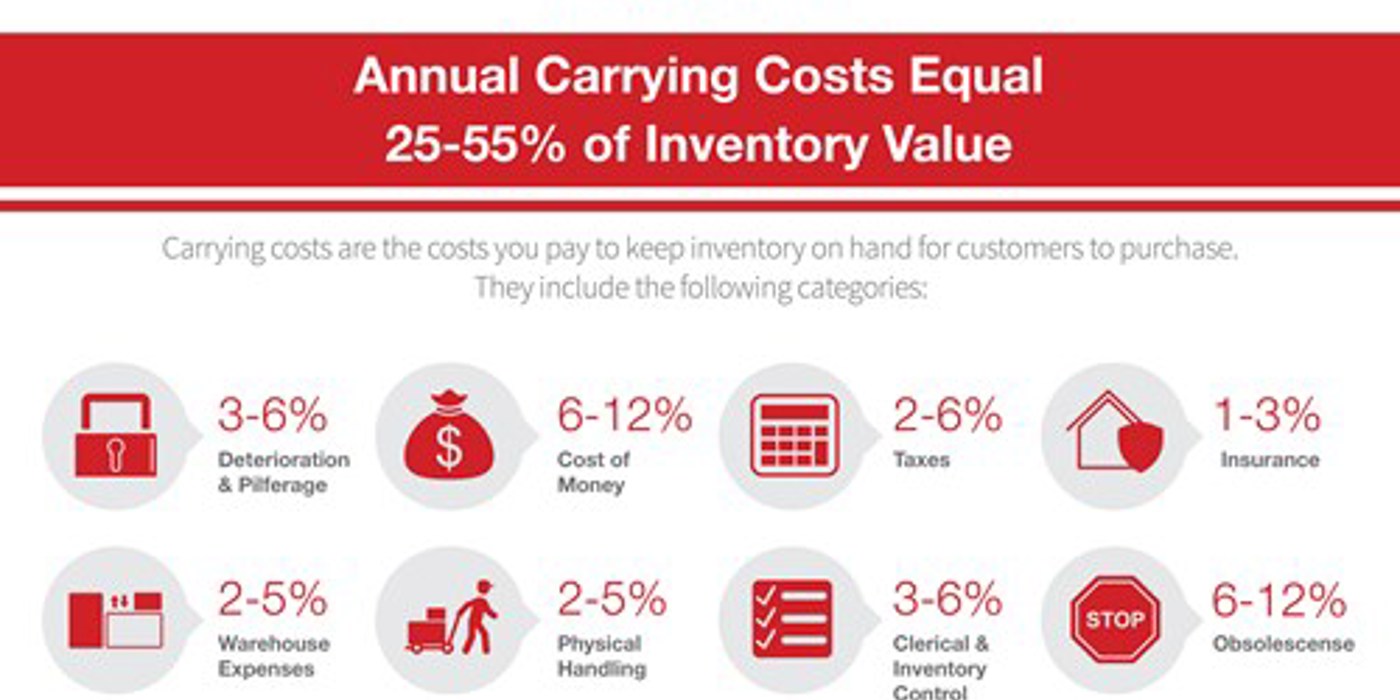An Untapped Opportunity to Slash Carrying Costs

An immediate struggle for many distributors is the sudden slowdown of incoming cash flow due to delays of projects, struggling customers, general economic distress or healthcare-related shutdowns.
These U-turns in their business plans have many prioritizing how they can save cash this year.
One sustainable solution is to shrink your inventory carrying costs. For many, this is an area of untapped potential.
What are carrying costs?
Distributors tend to tie up excess cash in inventory, both customer stockroom and distribution center inventory. Paying too much to stock more goods in a warehouse or stockroom than what’s actually being used is a common problem, but the effects will be far more harmful in today’s conditions.
Carrying costs constitute a far larger bucket than many distributors realize. This might include the cost of rent, utilities and employee salaries at a warehouse. It can also include insurance, perishability or shrinkage from theft, damage or human error.
In other words, it’s not free to store your inventory. Carrying costs can range from 25% to 55% of the inventory’s total value.
These add up when distributors:
- Keep too much inventory on hand in case of spikes in demand.
- Buy in bulk to save on shipping or take advantage of scale (and then the extra just sits on the shelf collecting dust).
- Hold onto “dead” inventory that isn’t flying off the shelves.
- Cater to seasonal demands based on past sales, which can lead to an overstocking problem.
While some of these costs may feel essential, there’s a good chance that most of these purchasing decisions are executed using gut feeling or past sales, and in today’s market, distributors need to be more precise in their planning. Every dollar matters.
How can distributors reduce carrying costs?
To cut these carrying costs — without putting yourself in a stockout predicament — follow some of these suggestions:
Kick the “just in case” habit. It’s natural to want to make sure you have more than you need, both in your own distribution center and in your customers’ stockrooms. Yet, this is where many distributors end up tying up cash that they could be saving.
Base your forecasts on actual usage.Stop relying on generic forecasts and historical sales data. Those numbers don’t reflect actual customer usage. Instead, use real-time data gathered at the point of use for a more realistic look at what you need to stock.
Sell off or recycle old inventory. Try discounting the inventory that isn’t moving. You’ll increase your cash flow while you’re at it.
Invest in the right technology. To truly gauge where you can save on carrying costs and generate cash, you need to look outside your traditional ERP to get real-time data of customer inventory usage at the stockroom point-of-use. Mobile inventory replenishment apps, eLabels, RFID tracking or IoT weight sensors that work with no human interaction can help provide this data.
Replace gut feeling and historical sales information with better and more precise data. Now is a great time to make some changes to put more effective, cost-savings practices in place for the future so that you can run leaner, while keeping customer service high




